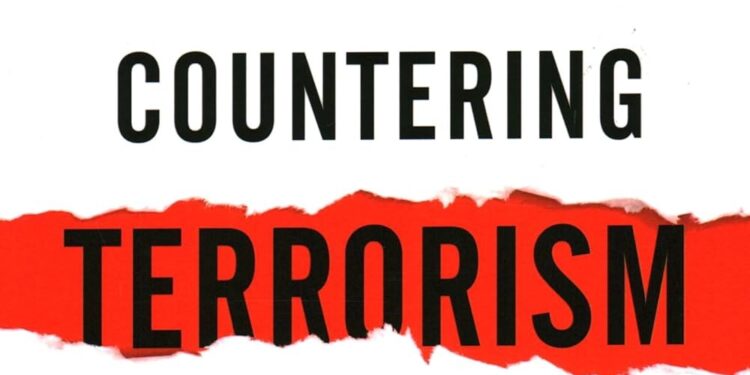Introduction
The Trojan Analogy
In The Aeneid, the Roman poet Virgil recounts the fall of Troy in vivid detail. After ten years of siege, the Greek army appeared to retreat, leaving behind a colossal wooden horse at the gates. Despite warnings from the priest Laocoön— “Timeō Danaōs et dōna ferentēs”, or “I fear the Greeks, even when they bring gifts”—the Trojans welcomed the horse into their fortified city. Hidden inside were elite Greek soldiers, who emerged under the cover of darkness to open the gates for the returning Greek forces. Troy, lulled into complacency, was destroyed not from beyond but within [1].
The Modern Parallel: Ghana’s Northern Strategy
In today’s security environment, this ancient parable offers a timely warning for Ghana as it develops and implements its counter-terrorism strategy. Much of Ghana’s current counter-terrorism posture focuses on the north—justifiably so, given the intensifying security crises in the Sahel region.
Armed groups affiliated with al-Qaeda and the Islamic State have increased operations in neighbouring Mali, Burkina Faso, and Niger [2]. Ghana, sharing borders with Burkina Faso and Togo, is at heightened risk of infiltration due to porous borders, ethnic linkages, and ungoverned spaces in frontier regions [3]. The Ghanaian government has responded with initiatives such as border surveillance enhancements, inter-agency coordination mechanisms, and community engagement programs aimed at resilience and early warning [4].
These are important and necessary efforts. But as the Trojans learned too late, it is dangerous to assume that the most visible threat is the only one worth guarding against.
The Overlooked Threat: Radicalised Lone Actors
While Ghana’s focus remains on external threats from the Sahel, it risks underestimating the threat of radicalised individuals or “lone actors” operating within its borders. These actors are often citizens, radicalised through online networks or local ideological channels, who act independently of organised groups [5].
Globally, the threat posed by self-radicalised individuals, often inspired through online propaganda has escalated, with several recent attacks carried out by lone actors in contexts where traditional intelligence failed to detect prior planning [6]. Ghana has had multiple alerts involving citizens suspected of travelling to or from conflict zones, with some intercepted or deported [7].
Additionally, religious institutions, correctional facilities, and disenfranchised urban communities, particularly among youth have been identified as potential sites of radicalisation [8].
A Dual-Lens Approach: External and Internal Vigilance
To counter these evolving threats, Ghana’s security strategy must integrate both outward and inward-looking components. A few strategic shifts could include:
- Expanding human intelligence (HUMINT) capacity beyond the borders into urban and peri-urban centres, where early indicators of radicalisation may appear [9].
- Investing in cyber intelligence to monitor the online spread of extremist ideologies, encrypted communications, and hate networks [10].
- Strengthening community resilience by enhancing collaboration with religious leaders, civil society actors, and youth groups in areas vulnerable to ideological infiltration [11].
- Establishing deradicalisation programmes for incarcerated individuals, returnees, and those at risk of radicalisation, particularly in underserved communities [12].
What is Lone Wolf Terrorism
Lone wolf terrorism refers to acts of terror carried out by individuals who operate independently, without direct support or operational involvement from terrorist organisations. These individuals plan, initiate, and execute attacks on their own, driven by personal motivations and ideologies rather than directives from a larger group [13] [14] [15].
Key Characteristics:
- Independence: Lone wolf terrorists act alone, without the operational support of terrorist organisations [13] [14].
- Motivations: Their motivations can be diverse, including political, religious, ideological, personal frustrations, or psychological disturbances [15] [16].
- Detection Challenges: Traditional law enforcement methods such as infiltration or wiretapping are ineffective against lone wolves due to their solitary nature. Detection often relies on identifying weak signals or digital traces left in extremist forums [17] [18].
- Weaponry: They may use a variety of weapons, including bombs, firearms, knives, vehicles, and biological agents, often resulting in mass casualties [15] [19].
- Psychological Profile: Lone wolf terrorists tend to be socially isolated and may exhibit high rates of psychological disturbance [16] [20].
Historical Context
Lone wolf terrorism has a long history, with instances dating back over 150 years. The motivations and contexts have evolved, particularly with the rise of the Internet, which has facilitated the spread of extremist ideologies [22].
Implications for Security
Detection and Prevention: Effective countermeasures require a focus on behavioural characteristics and activities rather than extremist ideologies alone. Financial intelligence and situational crime prevention measures can aid in identifying and preventing lone wolf attacks [23] [24].
Policy Response: Heavy-handed policy responses may be counterproductive. Understanding the motivations and psychological profiles of lone wolves is crucial for developing effective counterterrorism strategies [18] [25].
In summary, lone wolf terrorism is characterised by the independent nature of the attackers, diverse motivations, and significant challenges in detection and prevention. Understanding the psychological and behavioural aspects of these individuals is essential for developing effective countermeasures.
As alluded in the title, this is the prelude, in subsequent publications, the lone wolf terrorist will be on the surgical table and thoroughly studied in such a way that, at best a scanner will be provided for the identification of the content of the trojan horse or at worst to be wary of the gifts the Greeks send.
Learning from Troy
The fall of Troy was not the result of superior force, but of a security lapse caused by a misdirected focus. Ghana’s emphasis on northern threats, while warranted, should not come at the expense of vigilance within its own borders. Radicalisation can take root silently in classrooms, on social media, in prisons, or in the hearts of the disillusioned.
Like the Trojans, we risk defeat not by what approaches from beyond, but by what has already entered undetected. The lesson endures: Beware of Greeks bearing gifts.
References
- Virgil. (2008). The Aeneid (R. Fagles, Trans.). Penguin Classics. (Original work published c. 19 BCE)
- Institute for Economics & Peace. (2024). Global Terrorism Index 2024. https://www.visionofhumanity.org
- African Centre for the Study and Research on Terrorism. (2022). Quarterly Regional Threat Assessments.
- Ministry of National Security, Ghana. (2021). National Framework for Preventing and Countering Violent Extremism (P/CVE).
- United Nations Office of Counter-Terrorism. (2023). Handbook on Countering the Appeal of Terrorism Online and Offline.
- UN Counter-Terrorism Committee Executive Directorate (CTED). (2023). Trends Alert: Online Extremism and the Lone Actor Threat.
- Ghana Immigration Service. (2023). Annual Security Briefing on Border Movements and Intercepts.
- Institute for Security Studies (ISS Africa). (2021). Understanding Radicalisation in West Africa.
- UNDP Ghana. (2023). Youth Vulnerability and Violent Extremism in Urban Ghana.
- International Centre for the Study of Radicalisation (ICSR). (2022). Encrypted Messaging and the Evolution of the Lone Wolf Threat.
- Tony Blair Institute for Global Change. (2021). Countering Extremism through Faith Partnerships in Sub-Saharan Africa.
- International Organization for Migration (IOM) Ghana. (2022). Evaluation of Community Reintegration and Deradicalisation Programs.
- Perspectives on Terrorism. (2021). Understanding the motivations of “lone wolf” terrorists: The “bathtub” model. Perspectives on Terrorism, 15(6), 85–97.
- Ganor, B. (2023). Understanding the motivations of “lone wolf” terrorists: The “bathtub” model. In M. Ranstorp (Ed.), Routledge Handbook of Transnational Terrorism (pp. 342–355). Routledge.
- Gordon, T., Sharan, Y., & Florescu, E. (2015). Prospects for lone wolf and SIMAD terrorism. Technological Forecasting and Social Change, 95, 234–256. https://doi.org/10.1016/j.techfore.2014.10.009
- Spaaij, R. (2010). The enigma of lone wolf terrorism: An assessment. Studies in Conflict & Terrorism, 33(9), 854–870. https://doi.org/10.1080/1057610X.2010.501426
- Cohen, K., Johansson, F., Kaati, L., & Mork, J. C. (2014). Detecting linguistic markers for radical violence in social media. Terrorism and Political Violence, 26(1), 246–256. https://doi.org/10.1080/09546553.2014.849948
- Barnes, B. D. (2012). Confronting the one-man wolf pack: Adapting law enforcement and prosecution responses to the threat of lone wolf terrorism. Boston University Law Review, 92(5), 1613–1662.
- McCulloch, J., Walklate, S., Maher, J. M., Fitz-Gibbon, K., & McGowan, J. (2019). Lone wolf terrorism through a gendered lens: Men turning violent or violent men behaving violently? Critical Criminology, 27, 437–450. https://doi.org/10.1007/s10612-018-9401-3
- Smith, B. L., Gruenewald, J., Roberts, P., & Damphousse, K. R. (2015). The emergence of lone wolf terrorism: Patterns of behavior and implications for intervention. Sociology of Crime, Law and Deviance, 20, 89–110. https://doi.org/10.1108/S1521-613620150000020004
- Phillips, P. J. (2011). Lone wolf terrorism. Peace Economics, Peace Science and Public Policy, 17(1), 1–15. https://doi.org/10.2202/1554-8597.1206
- Feldman, M. (2013). Comparative lone wolf terrorism: Toward a heuristic definition. Democracy and Security, 9(1–2), 52–70. https://doi.org/10.1080/17419166.2013.747928
- Tierney, M. (2017). Spotting the lone actor: Combating lone wolf terrorism through financial investigations. Journal of Financial Crime, 24(2), 292–298. https://doi.org/10.1108/JFC-03-2016-0015
- Perry, S., Hasisi, B., & Perry, G. (2019). Lone terrorists: A study of run-over attacks in Israel. European Journal of Criminology, 16(1), 102–123. https://doi.org/10.1177/1477370818764143
- Al-Bayati, A. T. H. (2017). A new counterterrorism strategy: Why the world failed to stop Al Qaeda and ISIS/ISIL, and how to defeat terrorists. Praeger Security International.






























